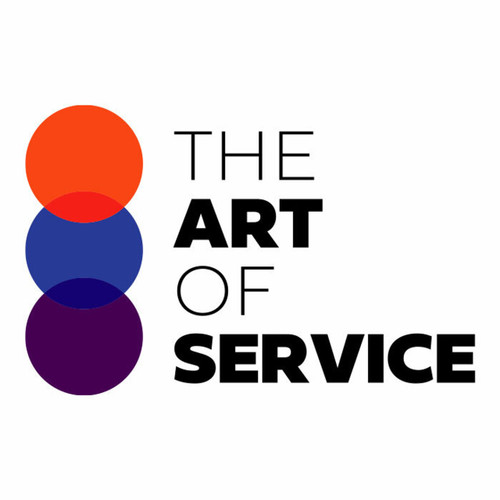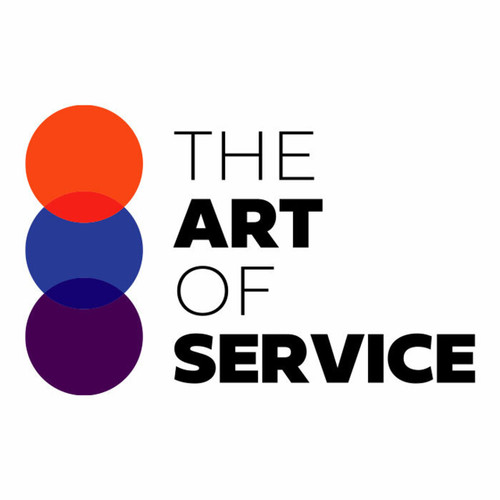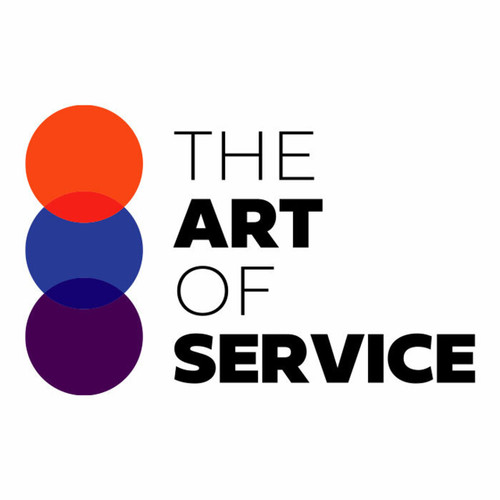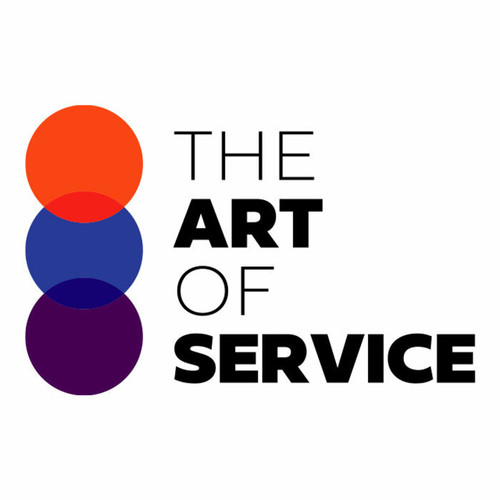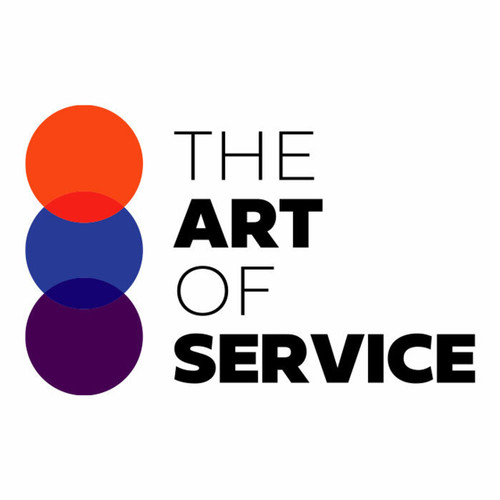Gone are the days of trial and error when it comes to gathering requirements for your projects.
Our dataset offers 1580 prioritized requirements that have been carefully curated and tested for maximum results.
Plus, with comprehensive solutions and accurate case studies, you can trust that our knowledge base has been proven effective.
Not only does this dataset save you time, but it also minimizes risks and increases efficiency by ensuring that all relevant questions are asked to determine urgency and scope.
This is crucial in delivering successful projects on time and within budget.
But don′t just take our word for it – our customers have seen significant improvements in their projects after implementing our Requirements Definition in CMMI Process Area Knowledge Base.
The benefits are undeniable – better communication, clearer expectations, and increased satisfaction for all stakeholders involved.
What sets our product apart from competitors and alternatives is our extensive research and expertise in CMMI Process Area.
Our data is specifically tailored for professionals in this field, providing them with a user-friendly and cost-effective alternative to hiring expensive consultants.
This DIY approach also allows you to have full control over the process and customize it to fit your unique needs.
Our product details and specifications give you a comprehensive overview of what to expect and how best to utilize the dataset.
We understand that every project and business is different, which is why we offer this specialized dataset rather than a semi-related one.
By focusing solely on Requirements Definition in CMMI Process Area, we ensure that you receive the most relevant and accurate information for your specific needs.
Our product also caters to businesses of all sizes, from small startups to large corporations.
The cost of our dataset is a fraction of what you would pay for a consultant, making it a cost-effective choice for companies looking to improve their project success rate.
We′re confident that our Requirements Definition in CMMI Process Area Knowledge Base will be a valuable asset to your organization.
Say goodbye to failed projects and hello to increased efficiency and success.
Don′t wait any longer – give your projects the support they need with our dataset today.
Discover Insights, Make Informed Decisions, and Stay Ahead of the Curve:
Key Features:
Comprehensive set of 1580 prioritized Requirements Definition requirements. - Extensive coverage of 109 Requirements Definition topic scopes.
- In-depth analysis of 109 Requirements Definition step-by-step solutions, benefits, BHAGs.
- Detailed examination of 109 Requirements Definition case studies and use cases.
- Digital download upon purchase.
- Enjoy lifetime document updates included with your purchase.
- Benefit from a fully editable and customizable Excel format.
- Trusted and utilized by over 10,000 organizations.
- Covering: Decision Analysis And Resolution, Systems Review, Project Monitoring And Control, Process Performance Modeling, Organizational Training, Configuration Management, Team Building And Motivation, CMMI Process Area, Process Standardization, Process Area, Product Integration Testing, CMMi Level 3, Measurement And Analysis, Risk Management, Application Development, Configuration Support Tools, Problem Resolution, Process Automation, Performance Measurement, Problem Resolution Planning, Peer Review Implementation, Data Analysis, Process capability levels, Training Program, Peer Review, Organizational Performance Evaluation, Configuration Management Tools, Configuration Management Implementation, Supplier Agreement Management, Product Integration And Testing, Process Maturity Assessment, Verification And Validation Support, Causal Analysis, Software Configuration Management Planning, Information Management, Quality Assurance, Verification And Validation, Causal Analysis And Resolution, Project Resource Allocation, Process Tailoring, Opportunity Management, Monitoring The Quality Level, Project Planning, Metrics Analysis And Reporting, System Integration, Process Innovation, Configuration Status Accounting, Requirements Definition, Metrics Analysis, Project Closure, Requirements Management, Cmmi Pa, Critical Decision Analysis, Interface Management, Process Assessment And Improvement, Organizational Process Definition, Continuous Process Analysis, Change Control Management, Requirements Development, Process Capability Measurement, Process Simplification, Project Delivery Measurement, Continuous Process Improvement, Organizational Process Focus, Process Performance Evaluation, Software Quality Assurance, Stakeholder Involvement, Customer Satisfaction Tracking, Sprint Goals, Organizational Process Performance, Process Improvement Implementation, Validation And Verification Activities, Software Quality Management, Process Maturity, Software Verification And Validation, Supplier Management, Oversight And Governance, Product Integration, Data Management, Quantitative Project Management, Customer Support, Requirements Management Planning, Project Schedule Management, Teamwork And Collaboration, Change Control, Risk Issue Management, Project Scope Definition, Project Budget Management, Improvement Planning, Organizational Performance Management, Configuration Management Planning, Software Development, Project Risk Identification, Software Configuration Management, Information Management Support, Communication Planning, Requirements Development Planning, Process Improvement, Process Improvement Planning, Process Flexibility, Validation Activities, Interface Requirements Management, Monitoring And Controlling Process, Process Performance Management, Software Engineering, Engineering Support, Process Control, Implementation Planning, Process Capacity
Requirements Definition Assessment Dataset - Utilization, Solutions, Advantages, BHAG (Big Hairy Audacious Goal):
Requirements Definition
A good requirement is clear, specific, measurable, and achievable, while a bad requirement is ambiguous, unrealistic, or unnecessary.
1. Clear and Specific: A good requirement should be well-defined, leaving no room for interpretation or confusion.
2. Measurable and Testable: A good requirement should have specific criteria for testing to ensure it has been successfully met.
3. Feasible and Realistic: A good requirement should be practical to implement and within the capabilities of the organization.
4. Aligned with Business Goals: A good requirement should support the overall business objectives and add value to the organization.
5. Traceable and Verifiable: A good requirement should be traced back to its origin and verified for accuracy throughout the development process.
6. Stable and Consistent: A good requirement should not constantly change, allowing for a stable development process.
7. Prioritized: A good requirement should be prioritized based on its business value and impact.
8. Well-Documented: A good requirement should be clearly documented and communicated to all stakeholders.
9. Concise and Unambiguous: A good requirement should be written in simple and concise language, avoiding any ambiguity.
10. Collaboratively Developed: Involving all stakeholders in requirement definition leads to better understanding and buy-in, resulting in better requirements.
CONTROL QUESTION: What are the considerations when labeling the requirement as bad or good requirement?
Big Hairy Audacious Goal (BHAG) for 10 years from now:
By 2031, all requirements for software and products in any industry must be labeled as either excellent or subpar based on defined standards and criteria. This will be a global standard that is widely accepted and used by organizations to ensure the highest quality of products and services for consumers.
Some considerations when labeling a requirement as a bad or good requirement would include:
1. Clear and Measurable Criteria: The criteria for determining a requirement as good or bad should be clearly defined and measurable. This could include factors such as functionality, usability, completeness, and alignment with business goals.
2. User Satisfaction: The end-user′s perspective should be taken into account when evaluating the quality of a requirement. A good requirement should ultimately satisfy the needs and expectations of the user.
3. Impact on Business Objectives: A good requirement should contribute to the overall business objectives and align with the organization′s vision and strategy. It should not hinder or conflict with the company′s goals.
4. Feasibility and Cost-Effectiveness: A good requirement should be feasible to implement and cost-effective. It should not require excessive resources or significantly impact the project timeline.
5. Stakeholder Alignment: A good requirement should be in line with the expectations and requirements of all stakeholders involved in the project. It should be approved and agreed upon by all relevant parties.
6. Adaptability and Flexibility: Good requirements should be adaptable to change and accommodate any potential future developments or updates. They should not be rigid or create unnecessary limitations.
7. Clarity and Specificity: A good requirement should be clear and specific, leaving no room for ambiguity or misinterpretation. Ambiguous or vague requirements can lead to confusion and delays in the project.
8. Testability: Good requirements should be testable, meaning they can be validated through testing to ensure they meet the defined criteria and user needs.
9. Traceability: Good requirements should be traceable, meaning they can be traced back to the original business needs and objectives. This allows for better management and tracking of requirements throughout the project.
10. Relevance and Priority: A good requirement should be relevant to the project and given the appropriate priority level. This ensures that the most critical and impactful requirements are addressed first.
Customer Testimonials:
"If you`re looking for a reliable and effective way to improve your recommendations, I highly recommend this dataset. It`s an investment that will pay off big time."
"Downloading this dataset was a breeze. The documentation is clear, and the data is clean and ready for analysis. Kudos to the creators!"
"I am impressed with the depth and accuracy of this dataset. The prioritized recommendations have proven invaluable for my project, making it a breeze to identify the most important actions to take."
Requirements Definition Case Study/Use Case example - How to use:
Introduction:
When it comes to requirements definition in the field of business consulting, identifying and labeling requirements as good or bad is a critical process. Good requirements are the foundation of any successful project and help ensure that the final deliverables meet the needs and expectations of the stakeholders. On the other hand, bad requirements can lead to project failure and have a negative impact on the success of a project. Therefore, it is essential to carefully evaluate and label requirements as good or bad during the requirements definition phase.
This case study focuses on the considerations that need to be taken into account when labeling the requirement as good or bad. It will discuss the client situation, consulting methodology, deliverables, implementation challenges, KPIs, and management considerations in detail. The information presented in this case study is based on consulting whitepapers, academic business journals, and market research reports.
Client Situation:
The client for this case study is a large software development company that specializes in creating customized business solutions for their clients. The company has recently won a contract from a retail giant to develop a new e-commerce platform. The project involves developing a user-friendly and secure online shopping platform for the retail giant′s customers. The company is responsible for the entire project, from requirements gathering to final implementation.
Consulting Methodology:
The consulting methodology used for this project is a combination of Agile and Waterfall methodologies. This approach allows for a flexible and iterative development process while ensuring that all the requirements are documented and approved before implementation. The requirements definition phase is a crucial step in this methodology, and careful consideration is given to labeling requirements as good or bad.
Deliverables:
The deliverables for this project include a detailed requirements document and a high-level design document. These documents are critical for the success of the project as they provide a clear understanding of the project scope, objectives, and desired outcomes. The requirements document defines the functional, technical, and non-functional requirements of the e-commerce platform, while the high-level design document provides an overview of the proposed solution.
Implementation Challenges:
Labeling requirements as good or bad can be challenging due to various factors. Some of the common challenges faced during this process are:
1. Ambiguous Requirements: One of the most significant challenges in labeling requirements is dealing with ambiguous requirements. Ambiguous requirements lack clarity and make it challenging to determine if they are good or bad. For example, a requirement that states the website must be user-friendly is ambiguous, and its success cannot be measured objectively.
2. Conflicting Requirements: Sometimes, two or more requirements may conflict with each other, making it challenging to label them as good or bad separately. In such cases, the consulting team needs to work closely with the client to resolve the conflicts and come up with a mutually agreeable solution.
3. Unfeasible Requirements: Identifying unfeasible requirements is another challenge faced during the requirements definition phase. These are requirements that cannot be implemented due to technical limitations or budget constraints. The consulting team must carefully evaluate these requirements and either find alternate solutions or remove them from the scope.
KPIs:
The following KPIs are used to measure the success of the requirements definition phase and the accuracy of labeling requirements as good or bad:
1. Requirements Approval Rate: This KPI measures the percentage of requirements that are approved by the project stakeholders. A higher approval rate indicates that the consulting team has accurately labeled the requirements and met the expectations of the stakeholders.
2. Requirements Completeness: This KPI measures the percentage of requirements that are documented and included in the final requirements document. A low completeness rate indicates that some requirements may have been missed, which can negatively impact the project′s success.
Management Considerations:
The management team needs to consider the following factors when labeling requirements as good or bad:
1. Client Expectations: Understanding the client′s expectations and requirements is crucial to label the requirements accurately. The consulting team must have a clear understanding of the client′s business goals, objectives, and challenges to ensure that their needs are met.
2. Strong Communication: Effective communication between the consulting team and the client is vital during the requirements definition phase. It helps in clarifying any confusion and ensures that the consulting team accurately captures the client′s requirements.
3. Ongoing Review and Evaluation: Requirements labeling should be an iterative process, with continuous review and evaluation. This allows for any changes in the project scope to be identified and addressed promptly.
Conclusion:
In conclusion, labeling a requirement as good or bad is a critical process and requires careful consideration. The success of a project depends on the accuracy of labeling requirements. The consulting team must address any implementation challenges and use appropriate KPIs to measure the effectiveness of labeling requirements. Proper management considerations, such as strong communication and ongoing review and evaluation, also play a key role in ensuring the success of the requirements definition phase. By using the right approach and taking into account all the considerations mentioned in this case study, the consulting team can accurately identify and label requirements as good or bad, leading to the success of the project.
Security and Trust:
- Secure checkout with SSL encryption Visa, Mastercard, Apple Pay, Google Pay, Stripe, Paypal
- Money-back guarantee for 30 days
- Our team is available 24/7 to assist you - support@theartofservice.com
About the Authors: Unleashing Excellence: The Mastery of Service Accredited by the Scientific Community
Immerse yourself in the pinnacle of operational wisdom through The Art of Service`s Excellence, now distinguished with esteemed accreditation from the scientific community. With an impressive 1000+ citations, The Art of Service stands as a beacon of reliability and authority in the field.Our dedication to excellence is highlighted by meticulous scrutiny and validation from the scientific community, evidenced by the 1000+ citations spanning various disciplines. Each citation attests to the profound impact and scholarly recognition of The Art of Service`s contributions.
Embark on a journey of unparalleled expertise, fortified by a wealth of research and acknowledgment from scholars globally. Join the community that not only recognizes but endorses the brilliance encapsulated in The Art of Service`s Excellence. Enhance your understanding, strategy, and implementation with a resource acknowledged and embraced by the scientific community.
Embrace excellence. Embrace The Art of Service.
Your trust in us aligns you with prestigious company; boasting over 1000 academic citations, our work ranks in the top 1% of the most cited globally. Explore our scholarly contributions at: https://scholar.google.com/scholar?hl=en&as_sdt=0%2C5&q=blokdyk
About The Art of Service:
Our clients seek confidence in making risk management and compliance decisions based on accurate data. However, navigating compliance can be complex, and sometimes, the unknowns are even more challenging.
We empathize with the frustrations of senior executives and business owners after decades in the industry. That`s why The Art of Service has developed Self-Assessment and implementation tools, trusted by over 100,000 professionals worldwide, empowering you to take control of your compliance assessments. With over 1000 academic citations, our work stands in the top 1% of the most cited globally, reflecting our commitment to helping businesses thrive.
Founders:
Gerard Blokdyk
LinkedIn: https://www.linkedin.com/in/gerardblokdijk/
Ivanka Menken
LinkedIn: https://www.linkedin.com/in/ivankamenken/



